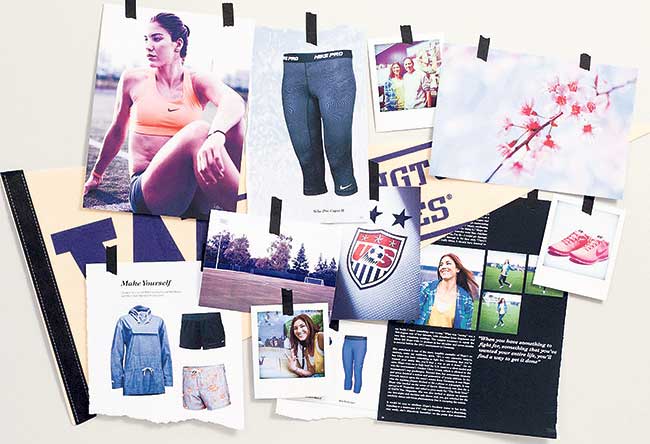Mood boards in their most classic and archetypal sense are physical boards which use foamcore or bulletin boards as their foundation. Things like pictures, texts, strings, sprigs of plants or any other physical things are hung or pinned to preview the desired ambience.
The mood you are in today was triggered by something. You might not realize it or even think about it on a daily basis but the sun or the rain, the first thing you noticed as soon as you opened your eyes, or a bouquet of flowers on the dining room table sets the tone of your day. This mood setting, as you can call it, is something you can create for yourself, at home and at work.
Enter the mood board, something which will help you establish the right setting for both personal and professional gains. Mood board (or inspiration boards) is a compilation of pictures, words, colors or even things like fabrics, beads that stimulate and influence a mood or design. Mood boards in their most classic and archetypal sense are physical boards which use foamcore or bulletin boards as their foundation. Things like pictures, texts, strings, sprigs of plants or any other physical things are hung or pinned to preview the desired ambience.
But with the current advancement in technology, we do not have to be limited to these immobile corporeal slabs. As digital and (mostly) internet based moodboards are very easy to create and convenient to carry with you as well, many people have embraced this form of mood boards too. Apart from pictures and texts, you can include audio, video and any other digital database to enhance your mood board. Pinterest, We Heart It, and Matboard are some examples of very efficient digital mood board platforms.
NC not in mood to topple govt: leader Nidhi

Although creating a mood board for a project might seem like a tedious job, the end result really makes every second you put into making it worth it, especially if it is a project for a client, meaning a project that’s creative and pays too. At the starting phase of your project, mood boards are great for brainstorming ideas. You can put in everything that create the vibe required for the project in a mood board and then work on it properly. It really helps you effectively zero in on your mission and create a plan to move forward.
Through a mood board you can create the foundations for what you want the end result of a project to look like and also create plans about what needs to be done to get the required results. The work and projects can be anything from interior decorating, fashion, branding and advertising, storyboarding, event planning to film, music, arts and even domestic and household purposes. A mood board can be a great help in organizing the steps and making sure no areas are overlooked in any project. Also, you can be sure that you will be covering all the basics when you work on a project with a mood board in place.

On the personal front, a mood board can be made to inspire and motivate you to do your best every day. If fitness or health is your priority, then looking at pictures and reading affirmations about then can really encourage you to exercise and substitute water for cola. Likewise, if you want to be happy a mood board can help you with that by letting you focus on the good things. A mood board can serve every purpose, you just have to define that ‘purpose’ first.
And that holds true for professional mood boards too. Before creating a mood board, be clear about why you want it or the objective of the project. What kind of outcome is expected from the project? Visualize what the end results look like. Try to feel the vibe the end results give you. If you are going to show your mood board at a meeting to put forth an idea or to a client, you should know your audience and their expectations as well. Now add things that give the same vibe into your mood board. Something you should keep in mind is that mood boards are most effective if you create them at the beginning of a project because then they can direct you throughout.
Now comes the hard part, the designing. What font best suit your vision? Think about the color scheme. Do you want it in neutral colours? Black and white? Pastel colours? Neons? Bright and lively colours? Choose the most fitting ones and then decide on your style. You could go for a clean and minimal board, or a very organized and chic board or maybe a board overflowing with ideas and designs capture your vibe best. Now start pinning things up. Decide what goes on top or bottom, which picture should be the largest or the smallest, and where you want to place that text that explains your idea. Figure out where to pin/put everything else so that you end up with your desired layout.
If it’s a personal mood board, then keep in mind the decor of your house as well. You don’t want a cluttered, overflowing mood board to rule your space. You can also choose to create different mood boards for different purposes. Have a fitness one in the kitchen, and a mood board to help you be happy in the living room.
However, the only things to keep in mind while making a mood board, be it for personal or professional reaons, are its aesthetics and purpose. It’s very easy to go overboard with ideas and then play around with endless pictures and fonts. Only put those things that are important and inspire as well and look good on the whole.



































